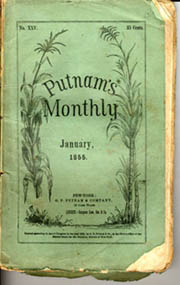|
|

Scholars In Action presents case studies that demonstrate
how scholars interpret different kinds of historical evidence. This short story by
Herman Melville was published serially in Putnam's Monthly magazine
in November and December 1853. "Bartleby, The Scrivener" is
the story of a copyist in a New
York City legal office who refuses to perform any other work asked of
him.
It is also a story about office work and social relations at a time when
urbanization and class stratification were increasing in New York City.
Economic and technological changes reshaped daily life dramatically in
the
mid-nineteenth century. The rise of new categories of professionals and
managers created a growing middle class that sought to impose their values
and morals on the working class and poor through a wide range of reform
movements. Melville's story of the relationship between the narrator,
a
lawyer, and his employee, Bartleby, was one of many stories about lawyers
published in popular magazines in the 1850s and is part of a genre of
stories that explore the culture of New York in that period.
Before you move to the next page, read the excerpt or full story of
"Bartleby, The Scrivener." How does the story portray the legal
profession?
How does it portray clerical work? What does the relationship between
employer and employee reveal about class relations? What does the story
reveal about urban life in New York City? Who would have read this story
when it was first published and why? What does Melville mean by "my hand in my pocket and my heart in my mouth"?
Published online February 2003. Cite as: Hans Bergmann, "Analyzing A Melville Story," History Matters: The U.S. Survey Course on the Web,
http://historymatters.gmu.edu/mse/sia/melvillestory.htm, February 2003.

|


